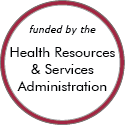Education and Training of the Rural Healthcare Workforce – Models and Innovations
These stories feature model programs and successful rural projects that can serve as a source of ideas and provide lessons others have learned. Some of the projects or programs may no longer be active. Read about the criteria and evidence-base for programs included.
Evidence-Based Examples
Thomas Jefferson University's Physician Shortage Area Program
Updated/reviewed September 2025
- Need: More rural doctors were needed in multiple states. In Pennsylvania, nearly half of the state's physicians practice in just three large metropolitan counties.
- Intervention: Sidney Kimmel Medical College at Thomas Jefferson University established the Physician Shortage Area Program (PSAP) in 1974 to recruit and support students who are from rural backgrounds and who wish to practice in rural communities.
- Results: Approximately 80% of PSAP alumni have remained in rural family medicine for at least 20 to 25 years after graduation.
Effective Examples
OHSU Rural Surgery Training
Updated/reviewed October 2024
- Need: General surgeons are needed in rural communities.
- Intervention: Oregon Health & Science University (OHSU) is sending residents to complete a general surgery rotation in rural southern Oregon.
- Results: 19 graduates of the rural residency program are currently practicing in a rural setting. The residents remain more likely than other OHSU residents to enter general surgery practice and to serve in a community of fewer than 50,000 people.
Rural Medical Education Program at University of Illinois College of Medicine Rockford
Added October 2023
- Need: To recruit and train medical students who are committed to choosing rural practice.
- Intervention: An add-on curriculum that includes seminars, field trips, and clinical rotations in rural and underserved areas.
- Results: 436 students have graduated from the RMED program between 1997 and 2023, with 65% of program graduates practicing in towns of less than 50,000 people.
MU AHEC Summer Community Program
Updated/reviewed September 2023
- Need: Lack of healthcare providers, specifically physicians, in rural Missouri.
- Intervention: Rising second-year medical students at University of Missouri's School of Medicine are given the opportunity to participate in a clinical program in a rural community setting.
- Results: Almost half of the participants from 1996-2010 chose to practice in rural locations upon graduation.
Promising Examples
Successfully Training and Educating Pre-medical Students (STEPS)
Updated/reviewed March 2025
- Need: To increase the number of primary care providers in northeast Kentucky.
- Intervention: STEPS provides support such as physician shadowing, mock interviews, and MCAT practice courses/exams for regional students applying to medical school.
- Results: Approximately 65% of participants have been accepted into medical school. The program has been replicated among most of Kentucky's regional AHECs.
TUSM-MHMMC Program Longitudinal Integrated Clerkship

Updated/reviewed April 2024
- Need: To fill vacant medical positions in Maine's rural medical facilities.
- Intervention: The Tufts Maine Track LIC program offers clerkships in rural medical facilities, exposing medical school students to the positives and possibilities that rural practices have to offer.
- Results: The program has seen an increase in students' interest in practicing in rural Maine. The majority of participants have pursued medical careers in one of the six core specialties studied during their clerkship.
Other Project Examples
McPherson Hospital High School Internship Program
Added September 2025
- Need: To provide high school students with hands-on health care experience while filling high-need roles in a rural hospital.
- Intervention: An internship program for high school students at McPherson Center for Health in McPherson, Kansas.
- Results: More than 30 students have participated in the program since 2023, seven of whom have become part-time or full-time employees at the hospital as a result.
Project PROMISE
Updated/reviewed September 2025
- Need: An increased interest among young people to pursue a medical career in rural North Carolina
- Intervention: Two medical students started a program that gives high school seniors medical academic training, mentor relationships, and hands-on experience in rural North Carolina facilities.
- Results: Project PROMISE has 40 high school completers, 19 of whom are pursuing an undergraduate degree with an interest in studying medicine. Two students are currently in medical school, with plans to work in a rural area once finished.
Structured Training for Rural Enhancement of Community Health in Obstetrics (STRETCH-OB)

Updated/reviewed June 2025
- Need: To improve maternal and birth outcomes in rural and underserved areas by increasing the number of family medicine physicians in these areas who have high-quality, evidence-based obstetrical care skills.
- Intervention: The STRETCH-OB program trains a select number of family medicine residents at the University of Illinois College of Medicine Rockford each year to provide high-quality maternity care, including surgical obstetrical care.
- Results: Four STRETCH-OB residents have graduated as of June 2025 and all have cesarean section privileges in their practice.
Pacific AIDS Education and Training Center-Nevada

Updated/reviewed April 2025
- Need: To improve and increase prevention and care services for HIV, STDs, hepatitis C, and other infectious diseases.
- Intervention: PAETC-NV provides clinical and didactic trainings, conferences, technical assistance, capacity building, webinars, and other services to providers and healthcare organizations statewide.
- Results: In 2024, PAETC-NV trained more than 1,800 healthcare providers across Nevada to increase clinical capacity in the care, screening, and prevention of HIV, other sexually transmitted diseases, and hepatitis C.
Last Reviewed: 12/9/2024

